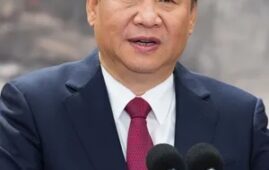



As more companies get ready for the debut of their products, services, and technologies at the upcoming 3rd China International Import Expo (CIIE) scheduled to kick off on Nov. 5, the spillover effects of the event continue expanding.
Exhibits at the previous expos are becoming commodities, exhibitors are turning into investors and a great number of outcomes are implemented at a faster pace.
In January, a new-generation cardiac cryoablation catheter exhibited by Medtronic, a medical technology and services company headquartered in Ireland, at the 2nd CIIE was successfully used in the surgical treatment for atrial fibrillation for the first time in Boao Super Hospital in south China’s Hainan province with the help of the green channel of Boao Lecheng International Medical Tourism Pilot Zone in Hainan.
At the 1st CIIE, Medtronic showcased its star product—the smallest pacemaker, Micra. A month later, the product was placed inside the body of a patient in China for the first time.
Since it was officially launched into the market during the 2nd CIIE, Micra has been implanted into the chests of more than 500 patients. The second-generation Micra, dual-chamber pacemaker, is going to be exhibited at the 3rd CIIE.
According to Alex Gu, Medtronic’s senior vice president and president of Medtronic Greater China, before they took part in the 1st CIIE, they weren’t quite sure of what the expo was, and when the 2nd CIIE started to enroll participants, they raced to sign up for it.
The company is going to search the bottom of its treasure chest for the best and latest products to send to the 3rd CIIE, Gu said.
What the CIIE has brought to Medtronic are not only rocketing number of orders and the opportunity to get better understanding of clients in third-and fourth-tier cities, but also a good reputation that the company didn’t quite acquire in 30 years since it entered the Chinese market, according to Gu.
The CIIE has become an indispensable platform for Medtronic’s development and cooperation with Chinese partners, Gu noted.
The contracted area of the registered enterprises for the 3rd CIIE has exceeded the planned area, and the number of Fortune Global 500 companies and industry leaders that have signed up for the upcoming event has reached the level of the previous expos, according to the China International Import Expo Bureau.
Most of the world’s well-known top ten enterprises in such industries as pharmaceutical, medical device, high-end consumer goods, and automobile have registered for the event, with dozens of enterprises applying to take part in the expo in the next three consecutive years, said the bureau.
In February, the Estee Lauder Companies Inc. announced that it would invest in China to build a world-class research and development center. The group’s net sales in the Chinese market returned to double-digit growth in March.
Over the past 27 years since its entry into the Chinese market, China has become the most important international market for Estee Lauder, said Joy Fan, president of the Estee Lauder Companies China.
The holding of the CIIE as scheduled is a vivid demonstration of China’s success in becoming the first country in the world to bring the COVID-19 pandemic under control and the general trend of the Chinese economy towards long-term growth, said Fan, adding that the company is optimistic about China’s development prospects.
Estee Lauder is ramping up efforts to prepare for the 3rd CIIE. In addition to expanding its exhibition area by about 100 square meters and bringing its 14 brands to the expo, the group is going to unveil multiple high-end products at the 3rd CIIE for the first time in the world.
Multinational pharmaceutical giant Boehringer Ingelheim (BI) recently announced in Shanghai that it planned to add 451 million euros (about $534.3 million) into its investment in China to speed up research, development and innovation in the next five years.
The next decade is expected to witness the approval of 71 new products of the company in China, according to BI.
According to Felix Gutsche, president and CEO of Boehringer Ingelheim Greater China, during the 2nd CIIE, the company not only received high-value tentative deals on the purchase of drugs, but saw the approval process of multiple innovative drugs in China further accelerated.
In the end of 2019, Baize’an, a new anticancer drug jointly developed by BI and Chinese biotechnology company BeiGene, was approved to market, becoming the first innovative biological drug that was licensed in China through the model of sub-contract production.
This year, BI opened a branch of its digital lab BI X and its External Innovation Hub China in Shanghai to fully incorporate China into its global early clinical development programs and accelerate the entry of new drugs into China.
The European Commission approved an additional indication for the company’s product nintedanib in adults for the treatment of other chronic fibrosing interstitial lung diseases (ILDs) with a progressive phenotype beyond idiopathic pulmonary fibrosis (IPF) in July. Only a month and a half later, the indication was approved in China.
China is not only an important production base and consumer market, but also a source of global innovations in the future, Gutsche said.
When China raises the curtain for the grand event featuring the country’s higher-level opening up and efforts to promote cooperation and win-win results for the international community in the National Exhibition and Convention Center in Shanghai, guests and exhibitors from all over the world will witness one more time how the country is determined to open its doors wider to the rest of the world.


Cooperation between China and Nigeria had.



Nigerian government has urged trainees of.



Minister of State for Foreign Affairs,.


The Nigerian Government has congratulated the.


The Humanitarian Service Diamond Awards has.
A Chinese Company, Inner Galaxy Steel.


The Programme Coordinator, Regulatory, Compliance and.


A Non-Governmental Organization (NGO), Committee for.
The Trustfund Pensions Limited has chided.


The House of Representatives Committee on.
Leave a Comment